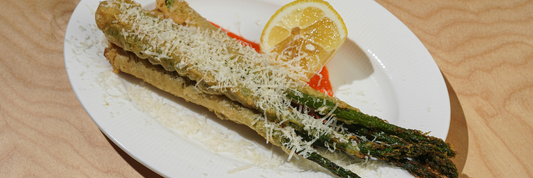Few dishes have captured the imagination of global diners quite like ramen. Once a humble bowl of noodles in broth, ramen has evolved into a cultural icon that transcends borders. From bustling ramen-ya in Tokyo to trendy shops in Toronto and New York, ramen continues to win over diners with its versatility, comfort, and deep cultural roots.
For North American restaurant owners and operators, ramen’s journey offers more than just culinary inspiratio it highlights the importance of adapting to consumer expectations while honoring authenticity. As ramen shops expand their reach through dine-in, takeout, and delivery, the question of sustainability has also come into focus.
That’s where Kimecopak plays a role. As a trusted partner for eco-friendly food packaging in Canada and North America, Kimecopak supports ramen restaurants by providing compostable bowls and disposable containers that preserve flavor, presentation, and convenience all while aligning with the growing consumer demand for sustainable dining experiences.
-
Sushi Omakase: Why Is It Becoming Increasingly Popular Among North American Diners?
-
The History and Philosophy Behind the Art of Japanese Sushi
- The Rise of Ghost Kitchens for Ramen: Packaging Challenges and Solutions
The Origins of Ramen in Japan

Ramen’s story begins not in Japan, but in neighboring China. Its evolution into Japan’s national comfort food is one of cultural adaptation and resilience.
Influences from Chinese Noodles
Ramen traces its roots to Chinese wheat noodles, introduced to Japan during the late 19th century. These “Shina soba” (literally “Chinese soba”) were enjoyed by port workers and students in cities like Yokohama. Unlike traditional Japanese soba (buckwheat noodles), these wheat-based noodles offered a chewier texture and paired perfectly with meat-based broths.
The Meiji Era and Early Adoption
During the Meiji period (1868–1912), Japan experienced rapid modernization and global exchange. Chinese immigrants opened food stalls, selling noodle soups topped with pork, scallions, and soy sauce-based broths. These bowls soon became popular with Japanese workers, who sought affordable, filling meals during long workdays.
By the early 20th century, ramen shops began to appear in urban centers, marking the first steps of ramen’s integration into Japanese cuisine.
Post-War Popularity and Ramen Stalls
Ramen’s true explosion came after World War II. In a time of food shortages, wheat flour supplied by the U.S. became a staple. Street vendors selling inexpensive ramen bowls popped up across Japan, offering nourishment and comfort to struggling communities.
By the 1950s, ramen had cemented itself as a cultural symbol of resilience affordable, hearty, and deeply satisfying. Its identity shifted from “Chinese import” to “Japanese soul food.”
Does Ramen Expire or Go Bad? Shelf Life and Storage Guide Explained
Ramen’s Evolution into a Symbol of Japanese Culture

As Japan’s economy grew, so did ramen’s cultural significance. No longer just a worker’s meal, ramen became a canvas for creativity and regional pride.
Regional Ramen Varieties
Japan’s geography gave rise to distinct ramen styles, each reflecting local ingredients and tastes:
- Sapporo Ramen (Hokkaido): Rich miso-based broth with butter and corn.
- Hakata Ramen (Fukuoka): Creamy tonkotsu (pork bone) broth with thin, firm noodles.
- Tokyo Ramen: Soy sauce-based broth with chicken or pork, paired with curly noodles.
- Kitakata Ramen (Fukushima): Light, shoyu-based broth with thick, flat noodles.
These variations not only celebrated regional identity but also became tourist attractions, drawing visitors eager to taste authentic local flavors.
Instant Ramen and the Global Boom
In 1958, Momofuku Ando revolutionized the food industry by inventing instant ramen (Nissin Chikin Ramen). Affordable, quick to prepare, and shelf-stable, instant ramen became a global sensation.
By the 1970s, instant ramen had reached North America and Europe, introducing millions of students, workers, and families to Japanese flavors. Today, the instant noodle market is worth over $50 billion worldwide (World Instant Noodles Association, 2023).
Ramen in Pop Culture
Ramen’s cultural footprint extended beyond the kitchen. From anime like Naruto where the protagonist frequently enjoys a steaming bowl to films and documentaries, ramen became a symbol of comfort and identity. This media presence fueled global curiosity, inspiring diners to seek out authentic ramen experiences abroad.
Ramen’s Journey to North America

While ramen had long been a staple in Japan, its expansion into North America was a slower, more nuanced process. Initially, instant ramen introduced many Canadians and Americans to the dish. Over time, however, authentic ramen shops began to appear in major cities, attracting food enthusiasts eager for the real experience.
The First Wave: Instant Ramen Popularity
During the 1970s and 1980s, instant noodles became a pantry essential in Canada and the U.S. Their affordability and convenience made them especially popular among students and young professionals. This era laid the foundation for broader interest in ramen.
The Rise of Ramen Restaurants
By the early 2000s, Japanese ramen-ya began opening in metropolitan areas like Toronto, Vancouver, New York City, and Los Angeles. Food critics, influencers, and TV shows spotlighted ramen as an art form rather than just a cheap meal. Diners lined up outside restaurants like Ippudo and Santouka, eager to try bowls of tonkotsu, shoyu, or miso ramen made fresh by skilled chefs.
Ramen as a Culinary Trend
In the 2010s, ramen became part of the North American food renaissance, where authenticity, quality, and storytelling mattered. Chefs introduced fusion ramen such as ramen burgers, vegan ramen, or spicy global twists while others stayed committed to traditional Japanese techniques. Today, ramen is no longer a niche food but a mainstream menu item with diverse consumer appeal.
The Sustainability Challenge in Ramen Dining

With ramen’s growing popularity across North America, restaurant owners face a unique challenge: how to balance authenticity and sustainability.
- Takeout demand: Ramen is traditionally best enjoyed fresh, but the rise of delivery apps means restaurants must find packaging that keeps noodles firm and broth hot without compromising quality.
- Environmental responsibility: Consumers especially millennials and Gen Z expect restaurants to use sustainable, compostable, or recyclable materials for takeout and dine-in packaging.
- Brand positioning: Restaurants that adopt eco-friendly solutions are seen as modern, responsible, and in tune with customer values.
Smart Labels and QR Codes: Adding Transparency to Sushi Packaging
Why Ramen Remains a Global Favorite

Ramen’s rise to global prominence is more than a food trend it’s a reflection of cultural exchange, innovation, and comfort.
- Universal appeal: Whether it’s a quick bowl of instant noodles or a carefully crafted tonkotsu ramen, the dish resonates with diverse demographics.
- Adaptability: Ramen chefs worldwide continue to experiment with flavors, from vegan miso ramen to spicy kimchi fusion bowls.
- Cultural storytelling: Eating ramen connects diners to Japan’s history, while also showcasing the creativity of modern chefs.
For North American restaurant owners, ramen represents both a culinary opportunity and a chance to build brand identity through thoughtful menu development and sustainable practices.
Conclusion
From its humble Chinese roots to its Japanese reinvention and global rise, ramen has proven itself to be more than just noodles in broth it’s a cultural movement. In Canada and the U.S., ramen continues to thrive, appealing to diners who value authenticity, innovation, and sustainability.
For restaurateurs, success in the ramen market means not only perfecting the flavors but also embracing eco-friendly solutions that resonate with today’s customers. With Kimecopak as a packaging partner, ramen restaurants can deliver unforgettable dining experiences whether in a cozy restaurant setting or through a takeout order that arrives just as flavorful as it left the kitchen.
FAQs About Ramen and Restaurant Packaging
1. Why is ramen so popular worldwide?
Ramen’s versatility, affordability, and rich cultural heritage make it appealing to diners across all demographics.
2. What are the biggest challenges for ramen restaurants in North America?
Maintaining food quality for takeout, managing rising ingredient costs, and meeting sustainability expectations are key challenges.
3. How can ramen restaurants stay competitive in 2025 and beyond?
By embracing innovation (such as vegan or gluten-free ramen), leveraging delivery platforms, and adopting eco-friendly packaging solutions.
4. What packaging works best for ramen delivery?
Compostable, heat-resistant bowls like those offered by Kimecopak ensure noodles and broth remain fresh and intact during transport.




